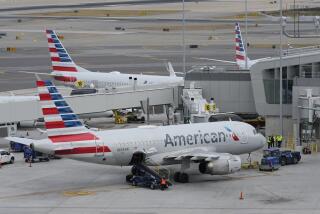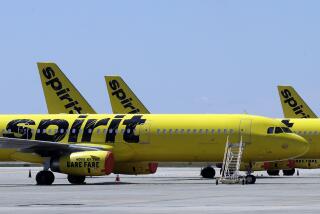Low-cost airlines can drive down fares as much as 67%, study says
Airline mergers have put more than 70% of the nation’s domestic traffic in the hands of four major carriers. But low-cost airlines still have some influence over airfares.
A new study shows that when an airline such as JetBlue, Spirit, Frontier, Alaska and Southwest launches service on an existing domestic route, the average price from all carriers drops as much as 67%.
It’s good news for travelers, but aviation experts say most popular routes are still dominated by the four biggest carriers — United, Delta, Southwest and the soon-to-be-merged American Airlines and US Airways.
And even when low-cost carriers launch a new route, fares drop only temporarily.
“It doesn’t stay that way forever,” said Rick Seaney, co-founder of travel website FareCompare.
The effect of low-cost airlines was the focus of the study by travel planning site Hopper. The study looked at what happened when low-cost carriers started to serve about 150 new routes. The website analyzed airfares three months before and three months after the carriers started the routes.
When JetBlue entered a market, prices dropped the most: as much as 67%.
For example, when JetBlue started service between Boston and Philadelphia in May 2013, the average fare for all airlines serving that route dropped to $118 from $356, according to the Hopper study.
“Where they choose to enter the market, they are able to knock prices down a lot,” said Patrick Surry, chief data scientist for Hopper.
Spirit and Frontier Airlines pushed down domestic fares by an average of 30% when they entered a new market, the study said.
And although those lower fares gradually rise again, Seaney said they don’t typically rise as high as they used to be.
“The more competition you have, the better for consumers,” he said.







